Abstract
Ten patients with familial hyperlysinemia with lysine-ketoglutarate reductase deficiency, identified through newborn screening programs or family surveys, were selected for review. Ages ranged from 2 to 24 years when last examined. A low-protein diet had been administered to two patients, which reduced the plasma lysine levels from 20 mg per dl or more to about 12 mg per dl. The rest were untreated. Mental development was judged normal or above average in nine. Mildly subnormal performance in three was considered appropriate to family and social background. No adverse mental or physical effects could be attributed to the hyperlysinemia. A normal child has been born to a mother with hyperlysinemia, indicating that the fetus may develop normally despite exposure to high lysine levels.
Full text
PDF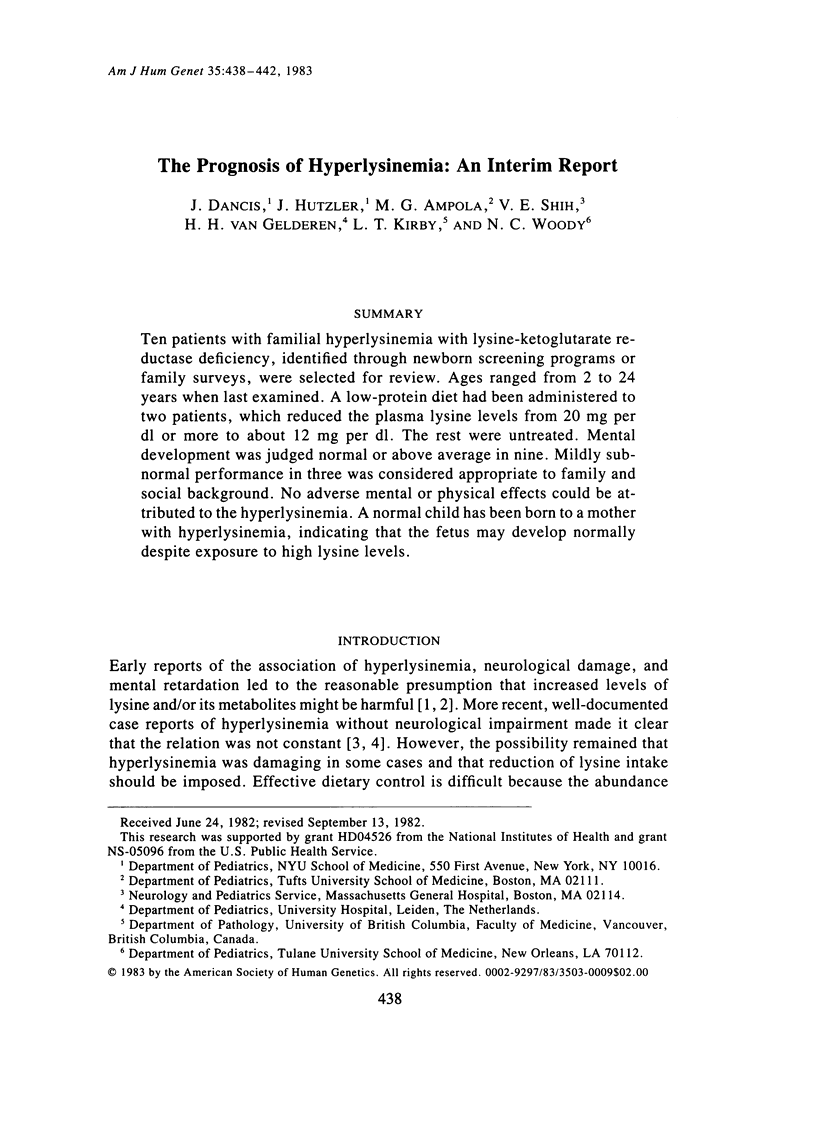
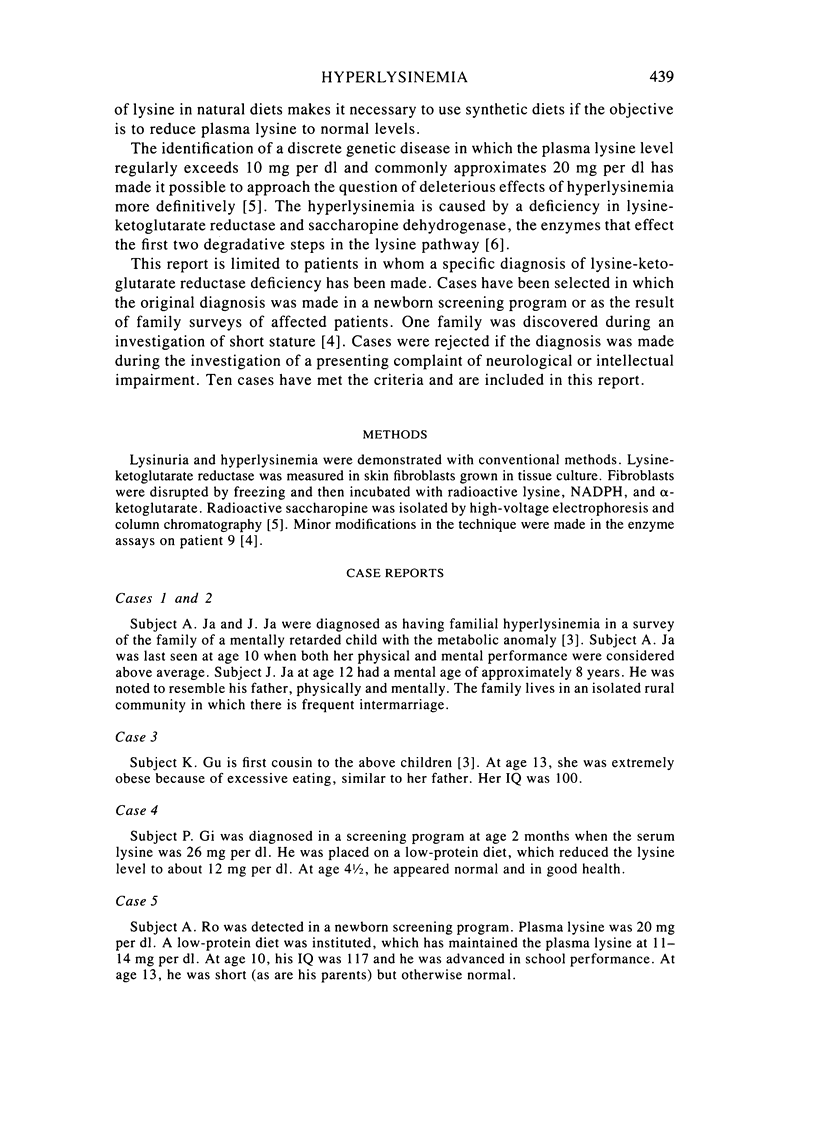
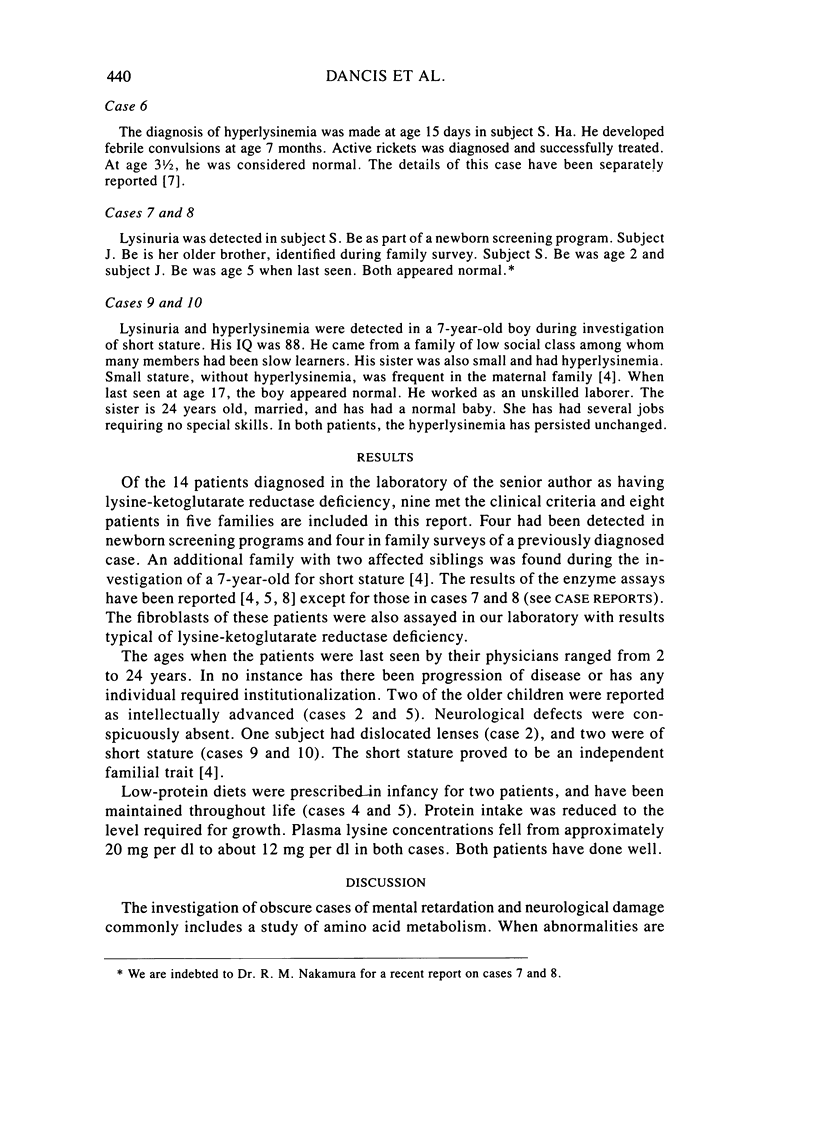
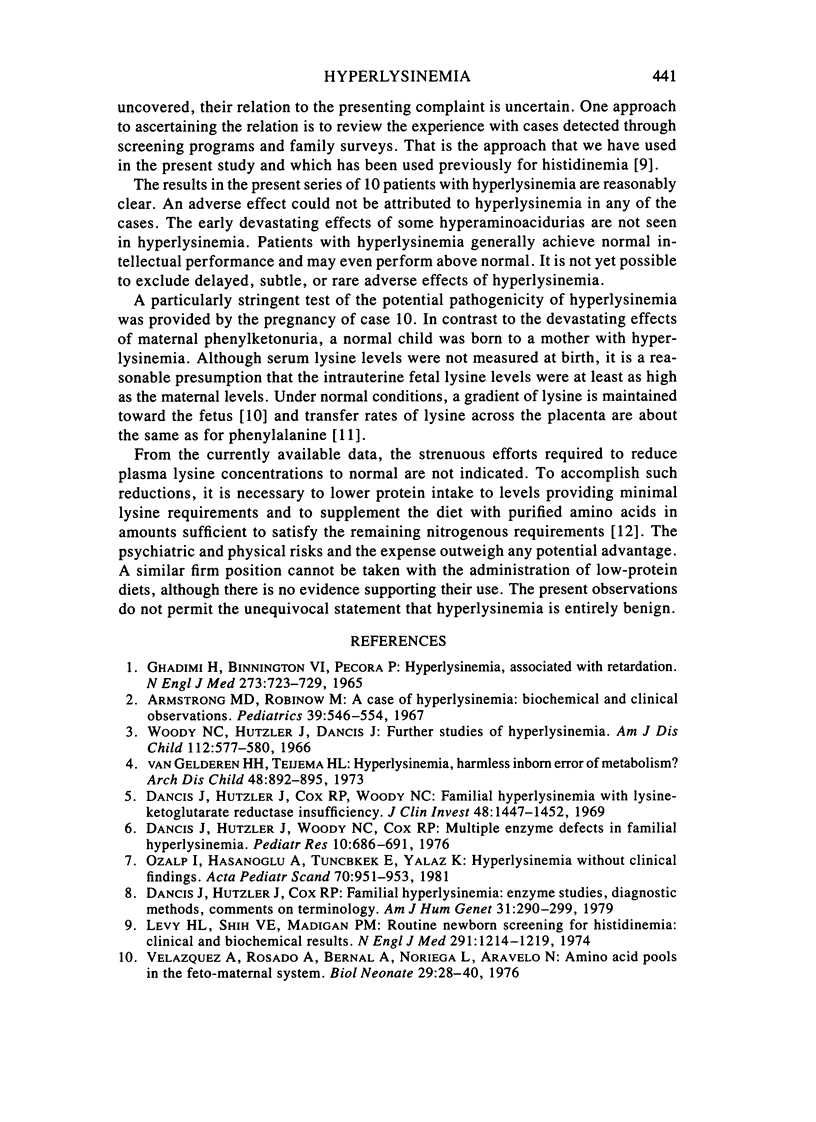
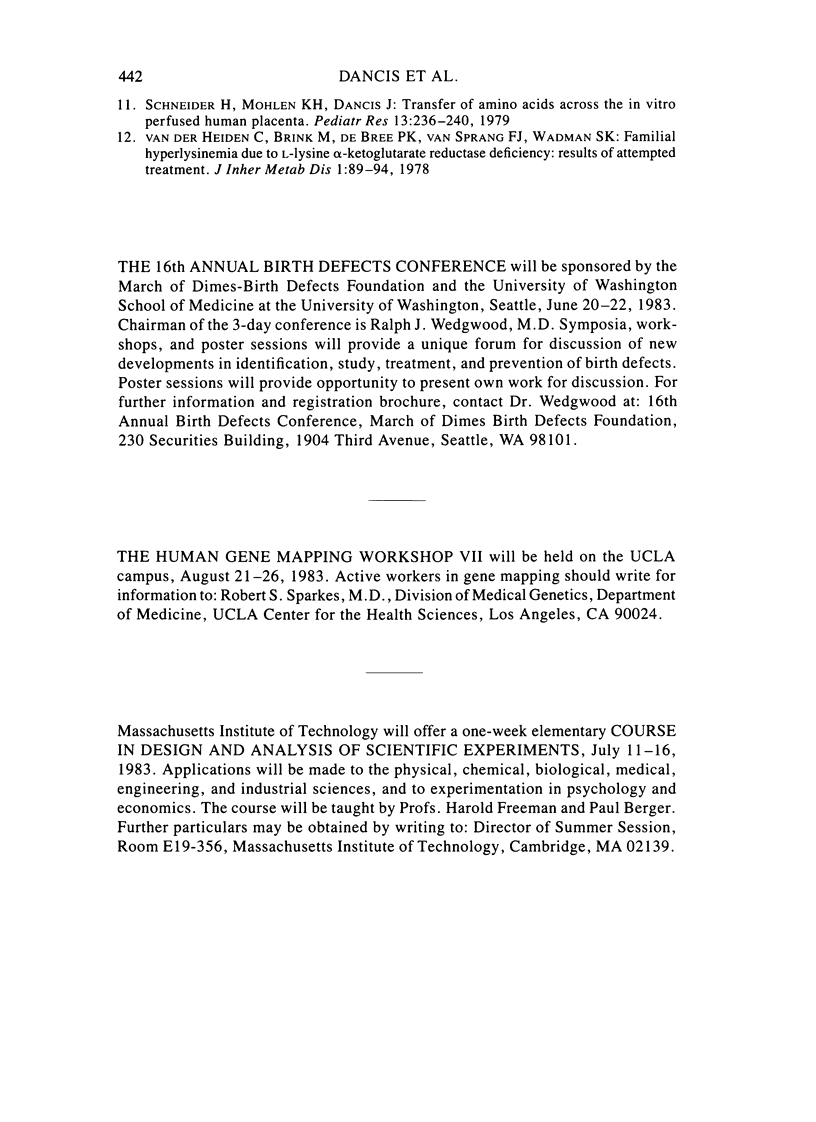
Selected References
These references are in PubMed. This may not be the complete list of references from this article.
- Armstrong M. D., Robinow M. A case of hyperlysinemia: biochemical and clinical observations. Pediatrics. 1967 Apr;39(4):546–554. [PubMed] [Google Scholar]
- Dancis J., Hutzler J., Cox R. P. Familial hyperlysinemia: enzyme studies, diagnostic methods, comments on terminology. Am J Hum Genet. 1979 May;31(3):290–299. [PMC free article] [PubMed] [Google Scholar]
- Dancis J., Hutzler J., Cox R. P., Woody N. C. Familial hyperlysinemia with lysine-ketoglutarate reductase insufficiency. J Clin Invest. 1969 Aug;48(8):1447–1452. doi: 10.1172/JCI106110. [DOI] [PMC free article] [PubMed] [Google Scholar]
- Dancis J., Hutzler J., Woody N. C., Cox R. P. Multiple enzyme defects in familial hyperlysinemia. Pediatr Res. 1976 Jul;10(7):686–691. doi: 10.1203/00006450-197607000-00011. [DOI] [PubMed] [Google Scholar]
- Ghadimi H., Binnington V. I., Pecora P. Hyperlysinemia associated with retardation. N Engl J Med. 1965 Sep 30;273(14):723–729. doi: 10.1056/NEJM196509302731401. [DOI] [PubMed] [Google Scholar]
- Levy H. L., Shih V. E., Madigan P. M. Routine newborn screening for histidinemia. Clinical and biochemical results. N Engl J Med. 1974 Dec 5;291(23):1214–1219. doi: 10.1056/NEJM197412052912303. [DOI] [PubMed] [Google Scholar]
- Ozalp I., Hasanoğlu A., Tunçbilek E., Yalaz K. Hyperlysinemia without clinical findings. Acta Paediatr Scand. 1981 Nov;70(6):951–953. doi: 10.1111/j.1651-2227.1981.tb06259.x. [DOI] [PubMed] [Google Scholar]
- Schneider H., Möhlen K. H., Dancis J. Transfer of amino acids across the in vitro perfused human placenta. Pediatr Res. 1979 Apr;13(4 Pt 1):236–240. doi: 10.1203/00006450-197904000-00005. [DOI] [PubMed] [Google Scholar]
- Velázquez A., Rosado A., Bernal A., Noriega L., Arévalo N. Amino acid pools in the feto-maternal system. Biol Neonate. 1976;29(1-2):28–40. doi: 10.1159/000240845. [DOI] [PubMed] [Google Scholar]
- Woody N. C., Hutzler J., Dancis J. Further studies of hyperlysinemia. Am J Dis Child. 1966 Dec;112(6):577–580. doi: 10.1001/archpedi.1966.02090150121014. [DOI] [PubMed] [Google Scholar]
- van Gelderen H. H., Teijema H. L. Hyperlysinaemia. Harmless inborn error of metabolism? Arch Dis Child. 1973 Nov;48(11):892–895. doi: 10.1136/adc.48.11.892. [DOI] [PMC free article] [PubMed] [Google Scholar]
- vd Heiden C., Brink M., de Bree P. K., v Sprang F. J., Wadman S. K., de Pater J. M., van Biervliet J. P. Familial hyperlysinaemia due to L-lysine alpha-ketoglutarate reductase deficiency: results of attempted treatment. J Inherit Metab Dis. 1978;1(3):89–94. doi: 10.1007/BF01805679. [DOI] [PubMed] [Google Scholar]


